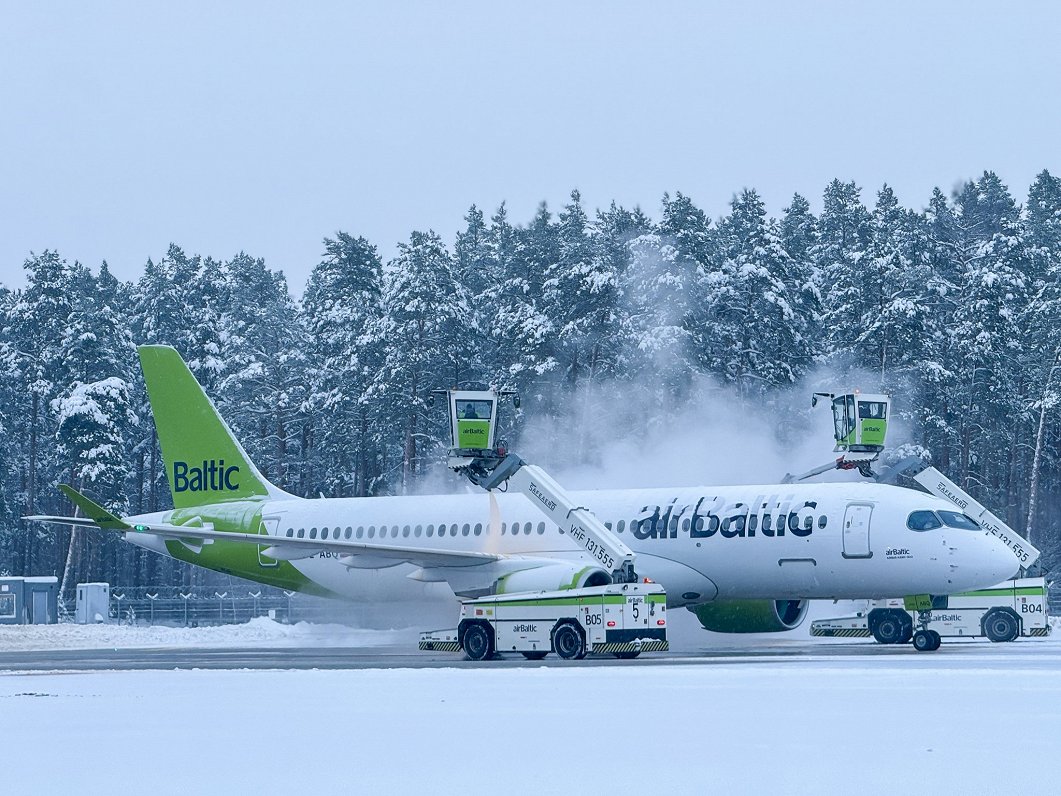
Over the next three years, the Baltic Sea Region is expected to lay the foundations for the transition of the aviation sector to renewable energy, including the use of hydrogen, with the launch of the international project BSR HyAirport, in which the Rīga International Airport also participates, according to a statement from the airport December 29.
The project brings together 16 airports, airlines, research institutions, and technology companies from Scandinavia, the Baltic States, Poland, and Germany, as well as 24 associated organizations.
On the part of Latvia, Rīga airport has joined the project as a partner, as well as the Latvian Hydrogen Association, Latvian University of Life Sciences and Technology, and aviation fuel supplier SIA Gulfstream Oil, while the associated participants include the national airline airBaltic, Liepaja airport, the Civil Aviation Agency and the Ministry of Transport.
BSR HyAirport aims to create the conditions for adapting airport infrastructure to flights of hydrogen-powered aircraft over the next three years. The project is being implemented to revive regional air traffic in the future and to better connect the Baltic Sea regions with aviation centers, so several smaller airports and regional airlines are also involved in the partnership.
“Investment in innovation and sustainability is an essential part of the development strategy of Riga airport. The BSR HyAirport project is an important step towards energy transformation in the aviation sector. Many questions still need to be answered before the regular use of hydrogen, so we are glad to be involved in the cooperation project between Baltic Sea Region airports and other aviation industry companies to find solutions together for the sustainability of aviation and the possibility to reduce the impact of the sector on climate change,” said Laila Odiņa, chairwoman of the board of the Riga airport.
The European Union supports BSR HyAirport through the Interreg Baltic Sea Region Programme, allocating a total of around €3.8 million between the various partners.
BSR HyAirport has a total budget of €4.8 million. The project provides approximately EUR 420,000 for the work of Riga airport over a three-year period.
The project brings together 16 airports, airlines, research institutions, and technology companies from Scandinavia, the Baltic States, Poland, and Germany, as well as 24 associated organizations.
On the part of Latvia, Rīga airport has joined the project as a partner, as well as the Latvian Hydrogen Association, Latvian University of Life Sciences and Technology, and aviation fuel supplier SIA Gulfstream Oil, while the associated participants include the national airline airBaltic, Liepaja airport, the Civil Aviation Agency and the Ministry of Transport.
BSR HyAirport aims to create the conditions for adapting airport infrastructure to flights of hydrogen-powered aircraft over the next three years. The project is being implemented to revive regional air traffic in the future and to better connect the Baltic Sea regions with aviation centers, so several smaller airports and regional airlines are also involved in the partnership.
“Investment in innovation and sustainability is an essential part of the development strategy of Riga airport. The BSR HyAirport project is an important step towards energy transformation in the aviation sector. Many questions still need to be answered before the regular use of hydrogen, so we are glad to be involved in the cooperation project between Baltic Sea Region airports and other aviation industry companies to find solutions together for the sustainability of aviation and the possibility to reduce the impact of the sector on climate change,” said Laila Odiņa, chairwoman of the board of the Riga airport.
The European Union supports BSR HyAirport through the Interreg Baltic Sea Region Programme, allocating a total of around €3.8 million between the various partners.
BSR HyAirport has a total budget of €4.8 million. The project provides approximately EUR 420,000 for the work of Riga airport over a three-year period.






/cdn.vox-cdn.com/uploads/chorus_asset/file/25476438/Gen_3_Cube_Rendering.png)





